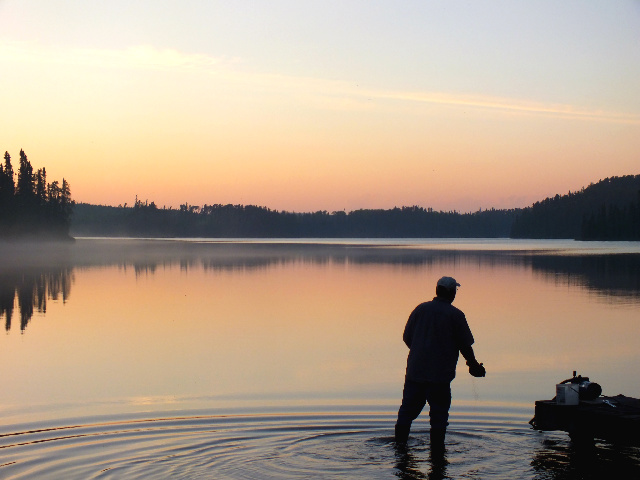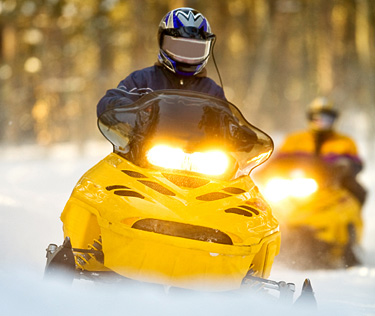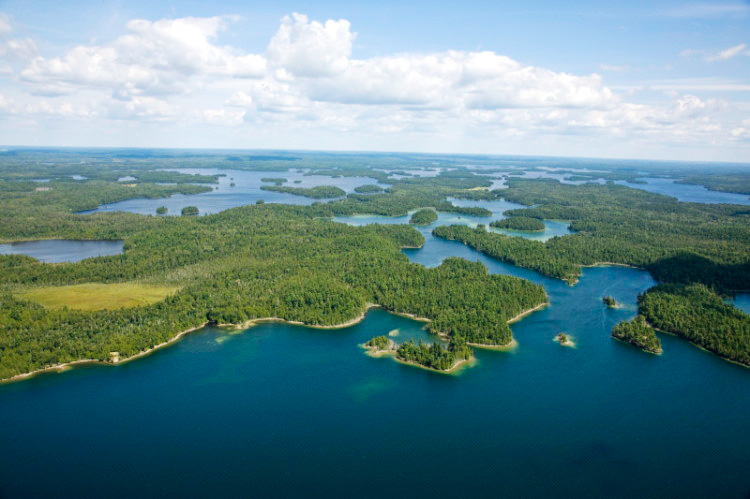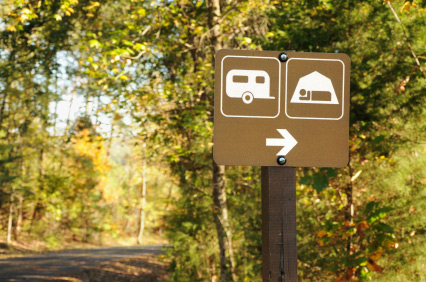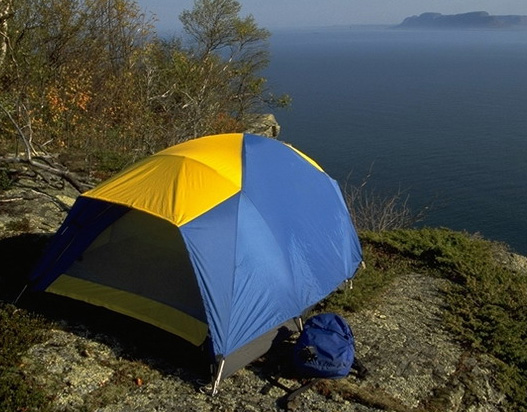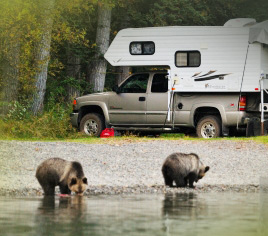Berry Picking in the Patricia Region
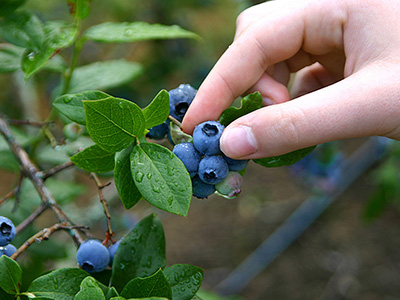 Berry picking in Northwestern Ontario is a fun way to enjoy nature, venture away from the lodge and pick some fresh berries that can be used for many different recipes. Blueberry pie, raspberry jam, strawberry shortcake! The opportunities are endless. Northwestern Ontario is abundant with wild blueberries, as well as raspberries. While picking, it is important to stay bear safe. Learn how to can/jar your fresh berries, and enjoy them year round!
Berry picking in Northwestern Ontario is a fun way to enjoy nature, venture away from the lodge and pick some fresh berries that can be used for many different recipes. Blueberry pie, raspberry jam, strawberry shortcake! The opportunities are endless. Northwestern Ontario is abundant with wild blueberries, as well as raspberries. While picking, it is important to stay bear safe. Learn how to can/jar your fresh berries, and enjoy them year round!
Blueberries
Blueberries are the most popular berry to be picked in Northwestern Ontario. Blueberries grow on shrubs in clusters throughout North America. There are three species of blueberry plants. Highbush Blueberries are the type of blueberries that are commonly sold in grocery stores. Theses plants can grow as high as 12 ft, but usually stay between 4-7. The Rabbiteye Blueberries are native to southern U.S. and can grow up to 20 ft. Lowbush Blueberries are commonly referred to as “wild blueberries”. These plants are the ones that are most common around Northwestern Ontario – which is known as one of the best places in the world to find these tasty, wild blueberries. They grow about 8-12 inches from the ground and produce smaller berries. The ideal picking time is between June-September. In the beginning of the season when the berries are smaller in size, they may taste a little more sour. The berries start off green and are considered ripe when they reach a dark blue. As the season progresses, the berries get larger and sweeter tasting. Blueberries are high in antioxidants. They have many health benefits, all available for free with a little bit of picking in Northwestern Ontario. Organic, wild blueberries are also proven to have more antioxidants than non-organic blueberries! Choose blueberries that are firm, and even in colour. If the berries are soft or wrinkly they may be expired or damaged. Berries that are light green are considered unripe, and are not ready to pick. Blueberries can be frozen for long periods of time, as well as used in many different recipes. Blueberries have a light dust that protects them. To prolong the life of your picked berries, do not wash them until right before you eat them. If you are freezing your blueberries and do not want them to clump together, considering spreading them out on a baking sheet and freezing them prior to bagging them.
Strawberries
Wild strawberries are a delicious treat, especially when they are freshly handpicked. Strawberries in Northwestern Ontario typically grow low to the ground. The plants have bright green leaves, and grow small white flowers. Typically, strawberries peak from mid-June to the end of July, which varies based on weather conditions. Choose strawberries that are firm, red and even coloured. Light pink or green strawberries are not ripe yet, and squishy, soft strawberries with brown marks are expired. Larger strawberries are generally sweeter in taste. Strawberries can be made into jams, pies, strawberry shortcakes, and much more!
Raspberries
Wild raspberries are the second most popular berry that is picked in Northwestern Ontario! Raspberries grow wild, peaking June-July. They grow on bushes that have thorns on the branches. Unripe raspberries will be a pale yellow/green. When they are ready for picking they turn a bright red, and are easily removed from the plant. Look for raspberries that have even coloring, with no soft spots, or brown spots. Brown spots or too soft of raspberries are expired. Raspberry bushes attract a lot of bees and wasps, which sometimes crawl into the raspberries so be sure to keep an eye out when picking to avoid being stung. Also, raspberries are more susceptible to other bugs so be sure to wash them thoroughly and examine them before eating. A technique some people use is to fill a bowl or sink with salt water, and let the berries sit in the water for about an hour. The salt water will draw out any grubs or worms that are inside the berries! Raspberries can also be frozen or baked into many different types of foods!
Blackberries
Blackberries and raspberries are not to be confused when berry picking! An unripe blackberry can be bright red, the same as a ripe raspberry. So how can you tell them apart? When picking a raspberry, a core or “rasp” will be left behind. The inside of the berry will be hollow. Blackberries do not have this core/rasp and when they are pulled off there will be a clean flat surface. Blackberries are not as common as raspberries in Northwestern Ontario. Ripe blackberries will be a deep black in colour with a plump feel. They are great for making jams or wines! Blackberries, like the other berries, can be frozen and used later for baking. Also, like blueberries the blackberries will last longer if they are not washed until right before they will be used, unless you are freezing them.
Bear Safety
It is important when wild berry picking to keep an eye out for bears. Bear’s diets consist largely of berries, especially blueberries, so they may be in the area while you are picking. To avoid bears, make your presence known. Whistle, talk loudly, or hum. Avoid going berry picking alone, it is always safer to pick in numbers. Be aware of your surroundings to spot any bears that may be nearby. Do not wear headphones, and do stay alert. Keep an eye out for any signs that bears may be in the area such as bear droppings, tracks, claw marks or flipped over rocks. Keep any food stored in an air tight container and avoid strong fragrances which may peak the bears curiosity. Occasionally scan your surroundings for any bears that may wander over. It is a good idea to bring a whistle/air horn, as well bear spray or perhaps a long handled axe. If you decide to bring your dog, be aware that a dog may come into contact with a bear and lead him back to you. Because of this, it is important to keep your dog controlled and close by. If you do encounter a bear, remain calm and do not make any sudden movements. If the bear hasn’t spotted you yet, try and quietly leave the area. If the bear is at a distance and spots you, make as much noise as possible and wave your arms around. Drop anything you can, such as a backpack, to possibly distract the bear if he chases you. Never run from a bear, they are much faster than humans, and do not climb a tree. If a black bear attacks, fight back. Be loud and aggressive, and use whatever you can as a weapon. Although black bears are quite a common sight in Northwestern Ontario, it is rare for a bear to attack a human. By following bear safety guidelines, you can enjoy your berry picking safely.
Jarring/canning
Jarring and canning your fresh berries is a great way to make them last so you can enjoy them for many months. When canning berries, you want to choose berries that aren’t soft or squishy. Wash your berries and remove any stems. It is a good idea to check for any bugs as well. Soft berries such as raspberries and blackberries do not need to be cooked before canning, while blueberries do. Jars and lids need to be hot when canning, and it is a good idea to follow any other instructions that come with your jars to prepare them for the berries. Boil syrup, then pour it over the loosely packed berries in the jars. Wipe the jar rims, and seal it was the lids. Place the jars in a canner for 15 minutes from the point of boiling, them place them on a towel away from any drafts. Once the jars have cooled, test the seals to be sure they are tight. If not, use the jars within weeks and refrigerate them. Jars that have sealed properly can be stored at room temperature.




